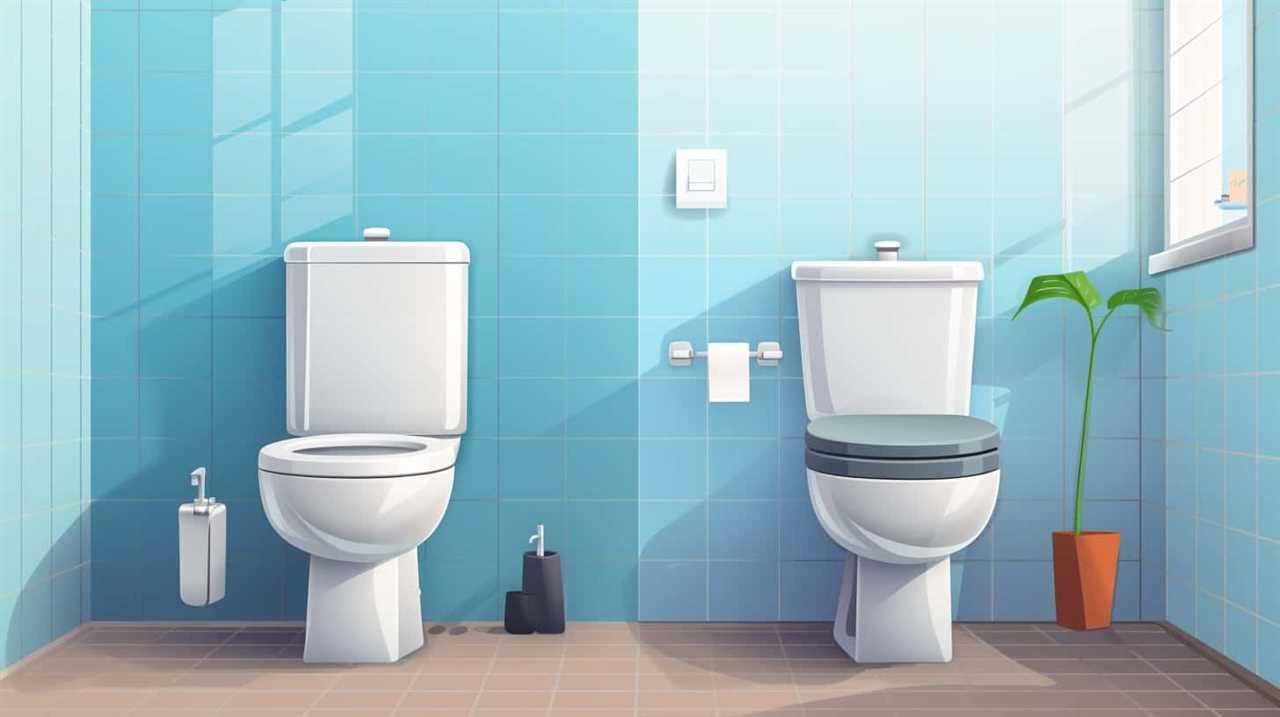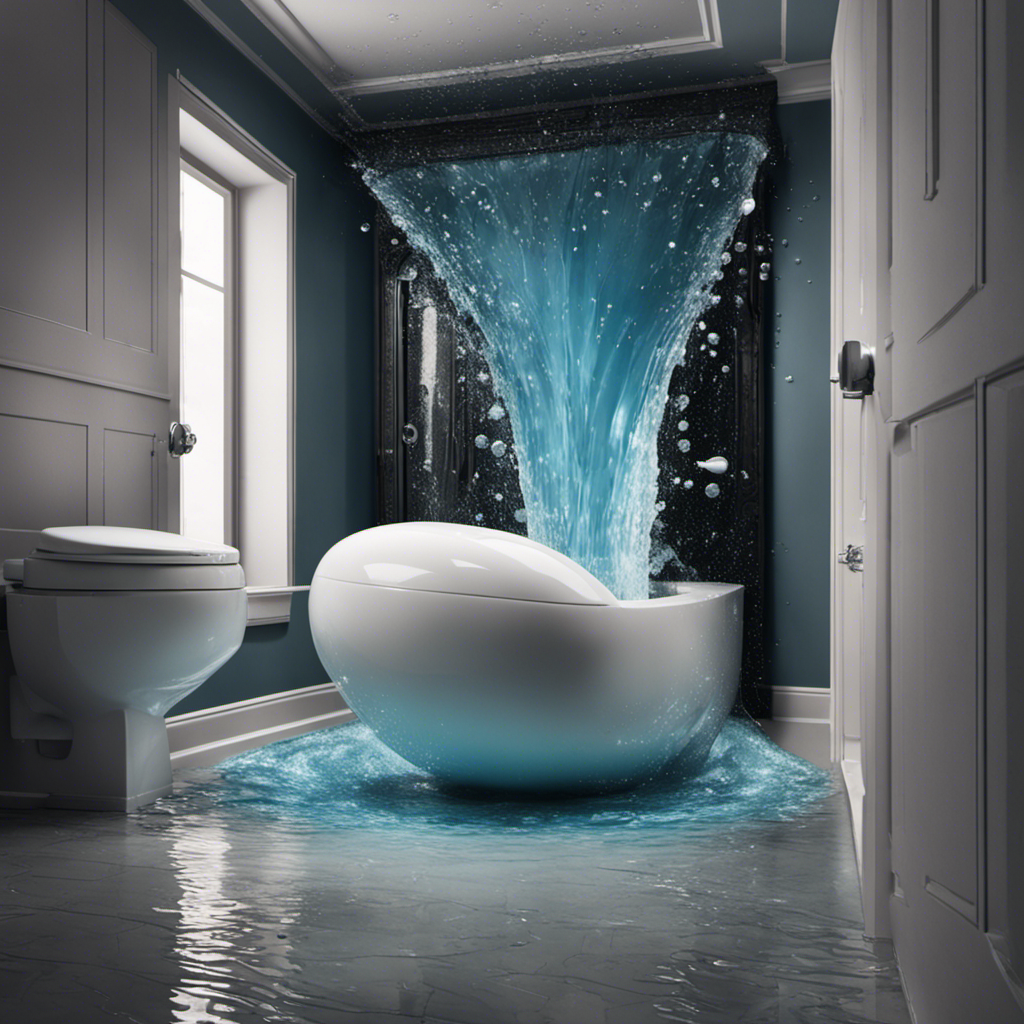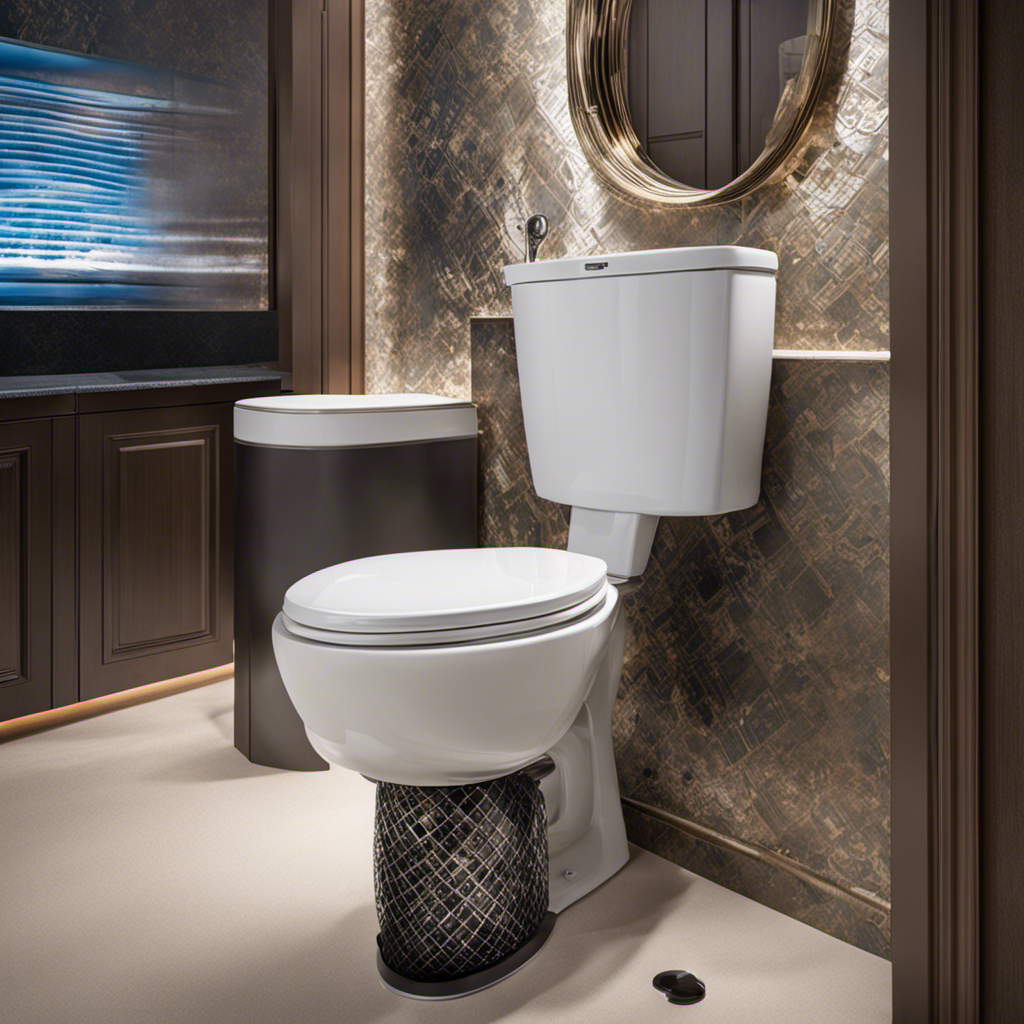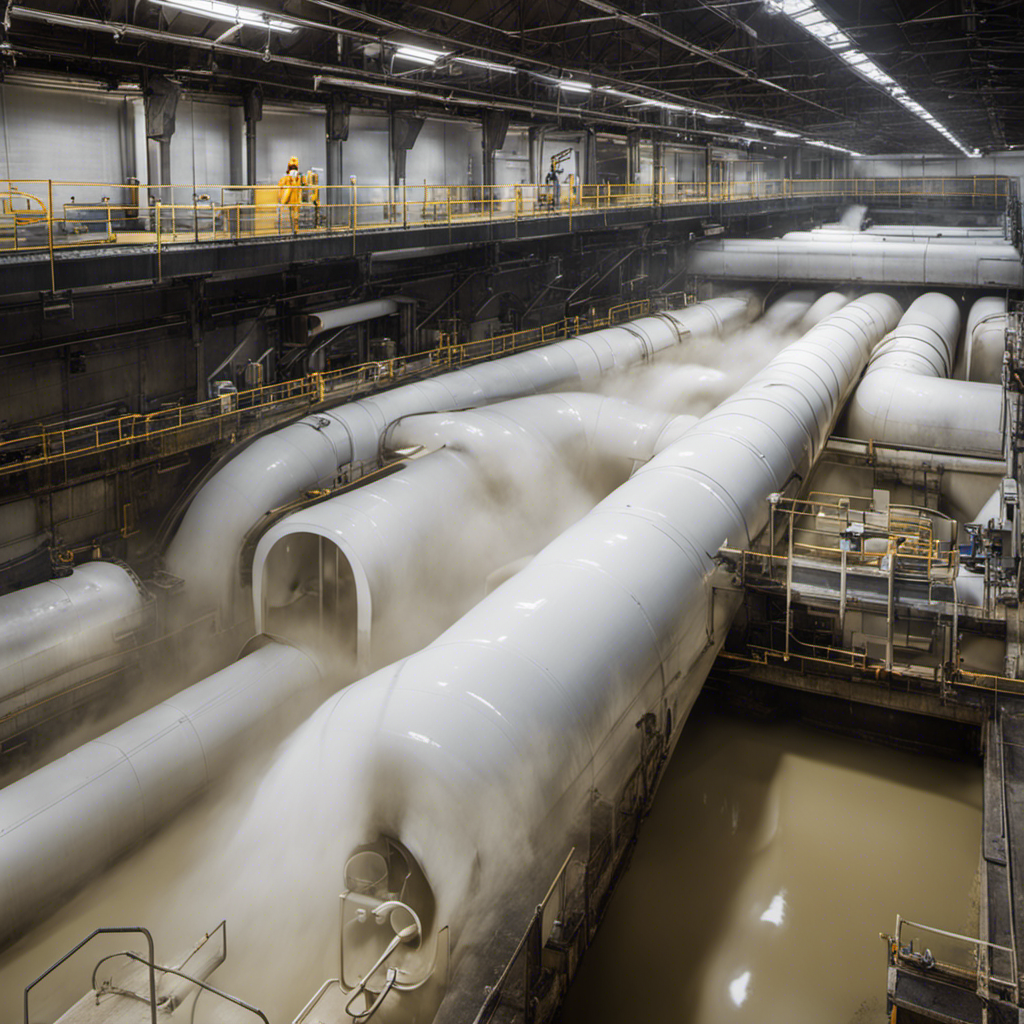We’ve all experienced it. That second of doubt before disposing of a sanitary pad by flushing it. Yet, are you aware that what appears to be a benign action can lead to significant repercussions?
From damaging our plumbing systems to causing blockages and wreaking havoc on sewage treatment plants, flushing sanitary pads can have a far-reaching environmental impact.
In this article, we’ll delve into the reasons why we should never flush these products and explore the importance of education and responsible hygiene practices.
So, let’s dive in and become masters of responsible waste management together.
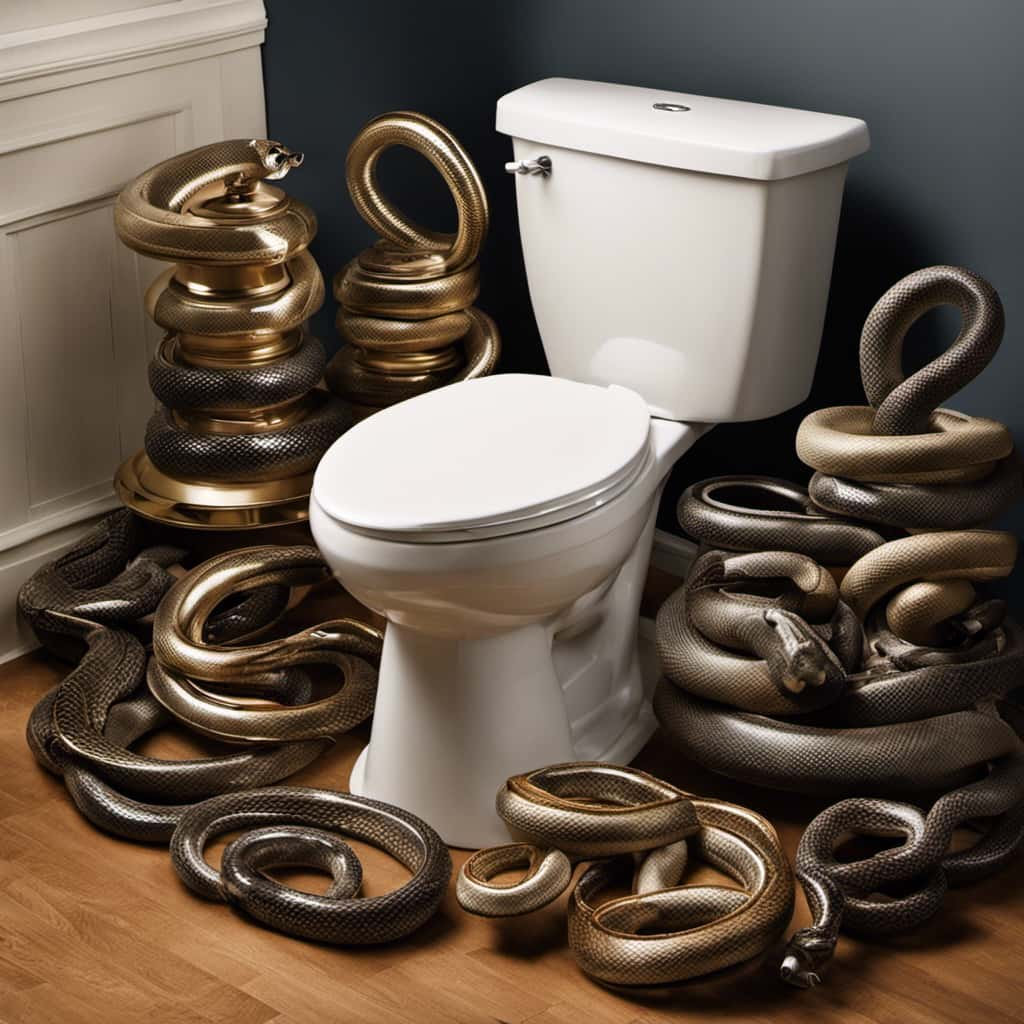
Key Takeaways
- Flushing sanitary pads can cause blockages in the sewage system, leading to sewage overflow and water source contamination.
- The plastic components in sanitary pads contribute to plastic pollution and take hundreds of years to decompose.
- Improper disposal of sanitary pads can result in the spread of waterborne diseases and the release of harmful chemicals into the water supply.
- Flushing pads can lead to costly repairs and maintenance for plumbing systems, as well as reduced efficiency and increased maintenance costs for municipalities.
Environmental Impact
Our improper disposal of sanitary pads can have detrimental effects on the environment. When we flush sanitary pads down the toilet, they can cause blockages in the sewage system. This not only leads to increased maintenance costs but also poses a risk of sewage overflow, which can contaminate water sources and harm aquatic life.
Additionally, the plastic components in sanitary pads, such as the wrappers and absorbent layers, don’t break down easily and contribute to plastic pollution. These environmental consequences are concerning, as they’ve long-lasting effects on ecosystems and biodiversity.
Moreover, improper disposal of sanitary pads can also have public health implications. The presence of contaminated water sources due to sewage overflow can lead to the spread of waterborne diseases, posing a risk to human health. Therefore, it’s crucial to educate individuals on the proper disposal methods of sanitary pads to mitigate these environmental and public health risks.
Plumbing System Damage
When sanitary pads are flushed down the toilet, they pose a significant risk of clogging the pipes in our plumbing system. This can lead to expensive repairs and inconvenience for homeowners.
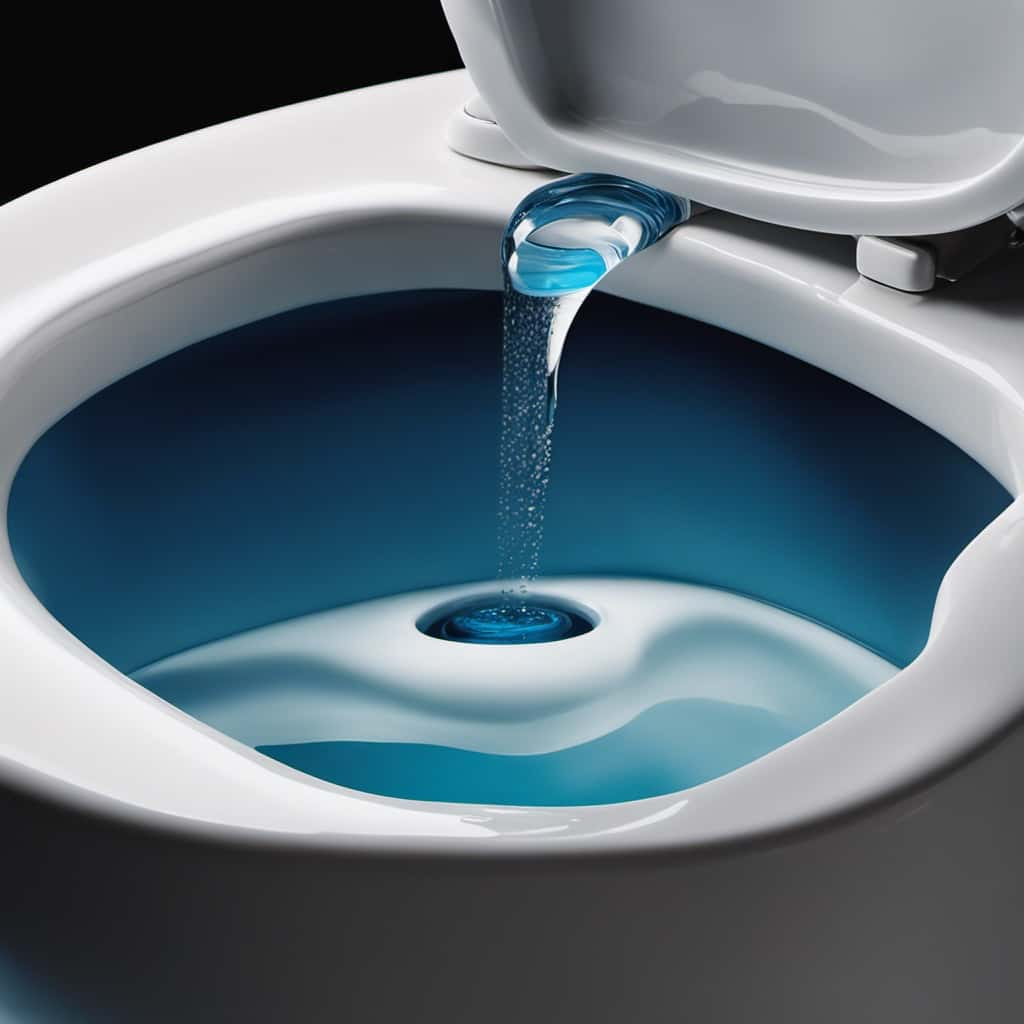
Additionally, the environmental impact of flushing sanitary pads isn’t to be overlooked, as it can contribute to sewage backups and contamination of water sources.
Pipe Clogging Risks
Flushing sanitary pads poses significant risks of pipe clogging and potential damage to the plumbing system. When sanitary pads are flushed down the toilet, they can get stuck in the pipes due to their size and composition. Over time, this can lead to blockages and cause serious issues in the plumbing system. These blockages can result in water backup, pipe bursts, and even flooding, leading to costly repairs.
Additionally, the environmental consequences of flushing sanitary pads are significant. The pads can end up in water bodies, leading to pollution and harm to aquatic life. Moreover, the health risks associated with pipe clogging and plumbing system damage can’t be ignored. Standing water caused by clogged pipes can become a breeding ground for bacteria and other harmful pathogens.
Therefore, it’s crucial to dispose of sanitary pads properly in order to avoid these risks and maintain a healthy plumbing system.
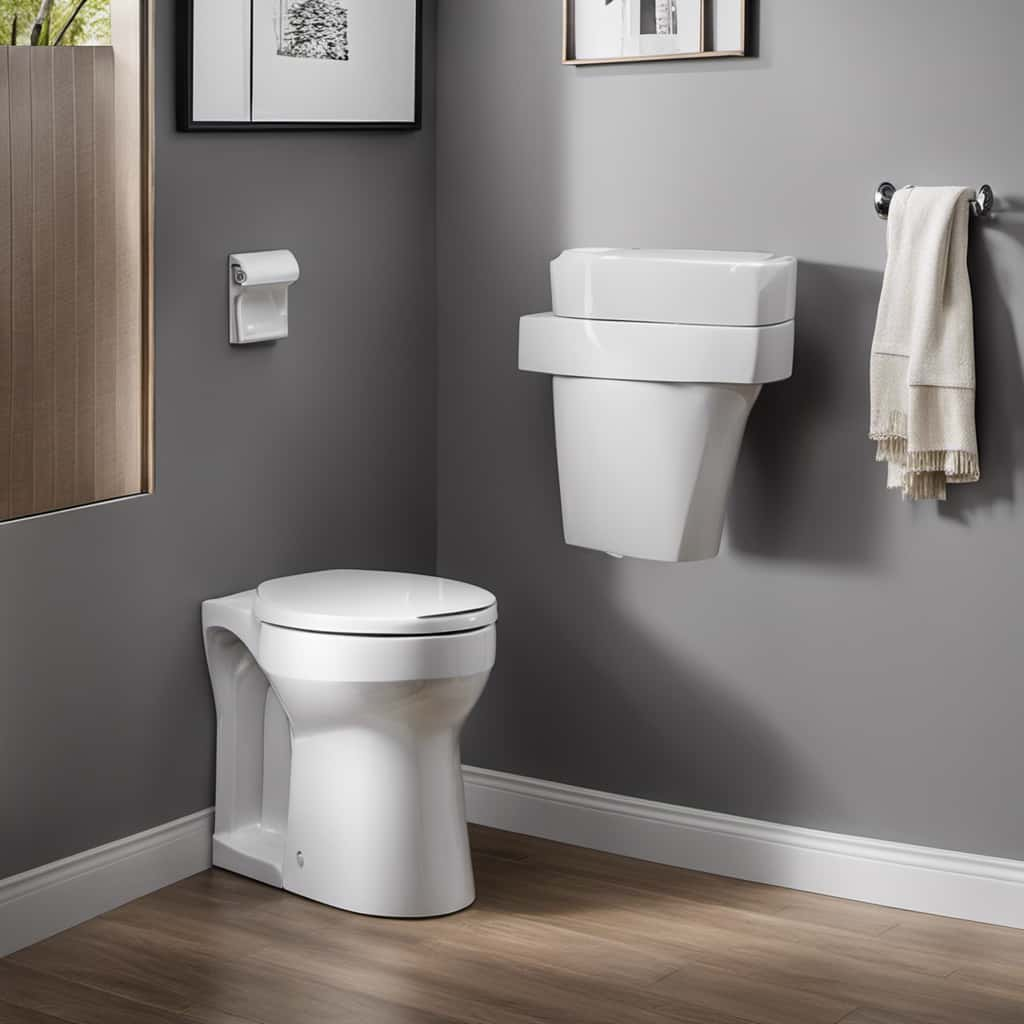
Expensive Repairs Needed
One of the primary reasons why flushing sanitary pads can lead to expensive repairs is the potential damage it causes to the plumbing system. It’s crucial to understand the consequences of irresponsible practices and the financial burden it can place on homeowners and businesses.
Here are some key points to consider:
- Flushing sanitary pads can cause clogs in the plumbing pipes, leading to backups and blockages that require costly repairs.
- The absorbent nature of sanitary pads can cause them to expand and get stuck in the pipes, further exacerbating the problem.
- In severe cases, flushing sanitary pads can even lead to burst pipes, resulting in extensive damage and the need for extensive and expensive repairs.
Understanding the expensive repairs that can arise from flushing sanitary pads reinforces the importance of responsible practices. However, the environmental impact dangers associated with this issue also need to be addressed.
Environmental Impact Dangers
But how exactly does flushing sanitary pads pose environmental impact dangers, specifically in terms of plumbing system damage?
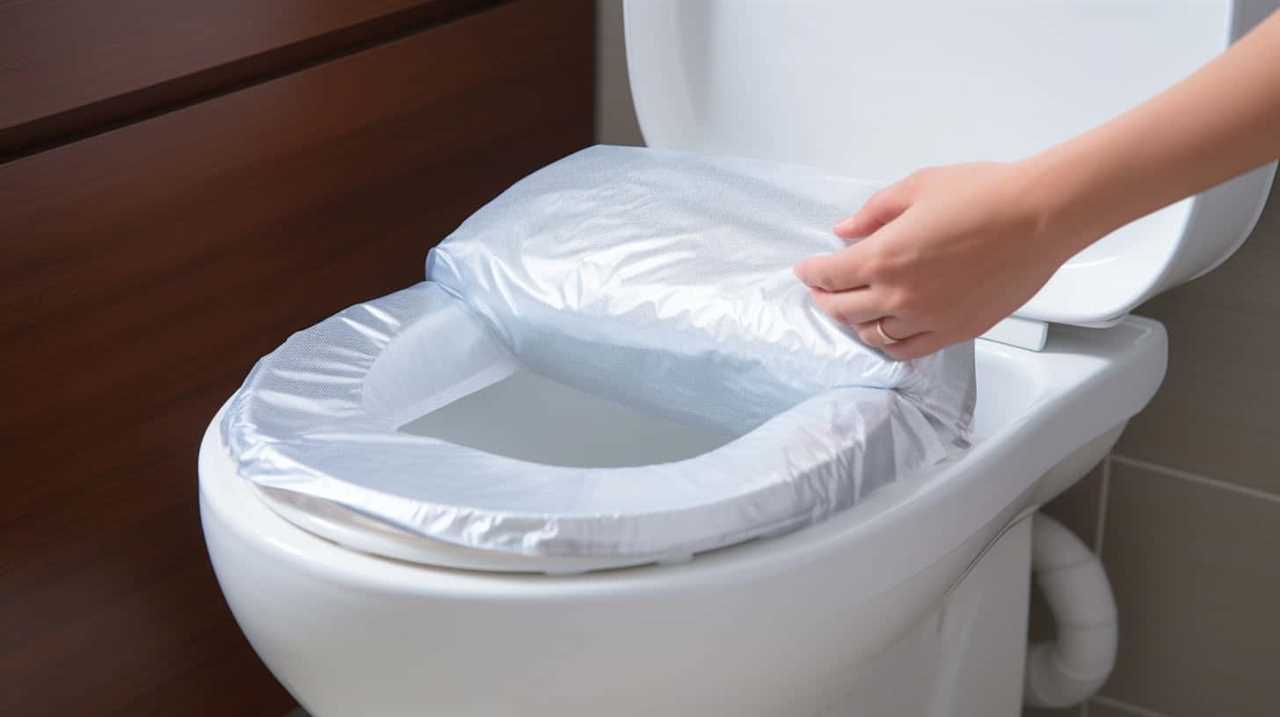
When sanitary pads are flushed down the toilet, they can cause serious problems for the plumbing system. The absorbent material in sanitary pads can quickly clog pipes and drains, leading to blockages and backups. These blockages can result in costly repairs and the need for professional assistance.
The environmental impact of flushing sanitary pads goes beyond the immediate plumbing issues. The pads can end up in sewage treatment plants, where they can cause equipment malfunctions and disrupt the treatment process. Additionally, the plastic components of sanitary pads can contribute to environmental pollution, as they take a long time to break down and can end up in waterways, harming wildlife and ecosystems.
It’s important to dispose of sanitary pads properly to avoid these health risks and environmental consequences.
Clogging and Blockage
Experiencing clogging and blockage is a common issue when disposing of sanitary pads in the toilet. Flushing sanitary pads can lead to a host of problems, including environmental consequences and health hazards. Here are three reasons why flushing sanitary pads is a bad idea:
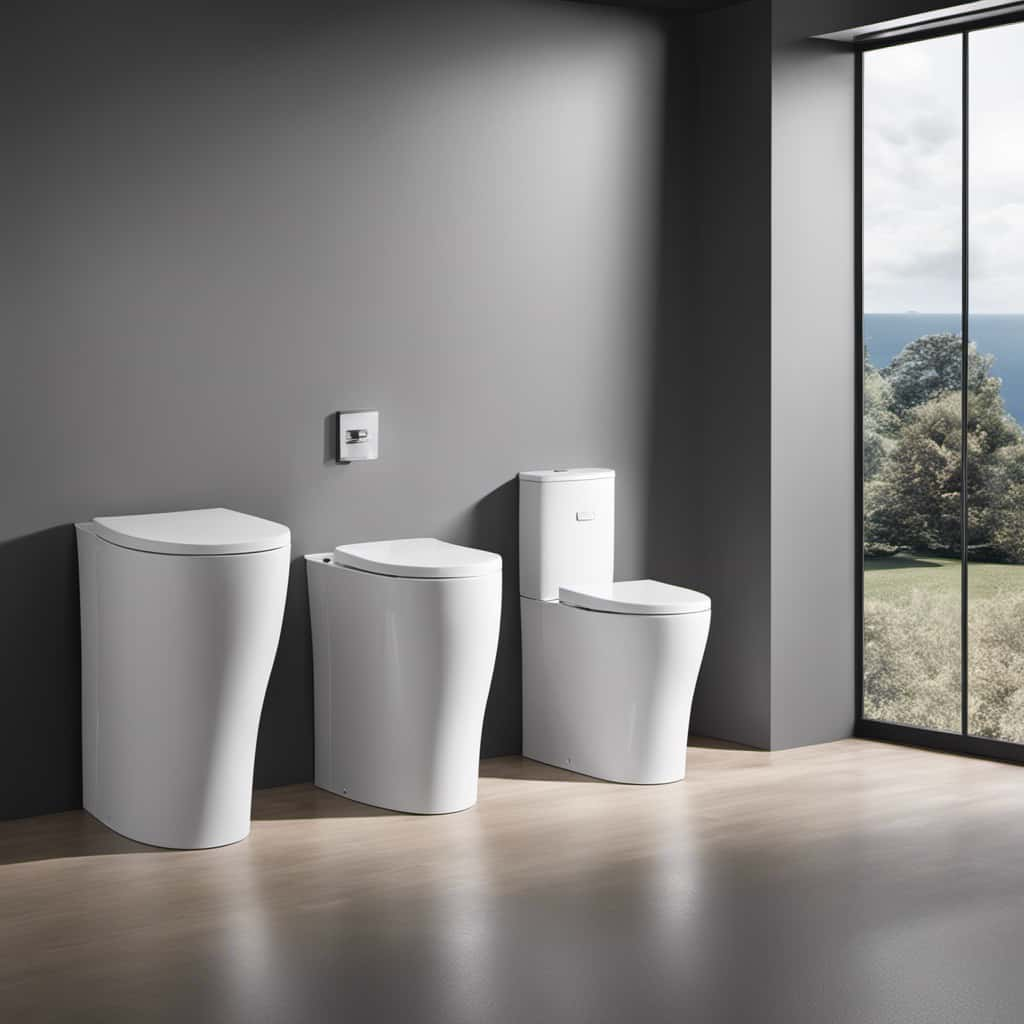
- Pipe Damage: Sanitary pads aren’t designed to break down in water. Flushing them can cause them to get stuck in the pipes, leading to blockages and potential damage to the plumbing system.
- Sewage Backup: When sanitary pads clog the pipes, it can result in sewage backup. This can cause foul odors, unsanitary conditions, and costly repairs.
- Sewage Treatment Issues: Sanitary pads that make their way into the sewage system can disrupt the sewage treatment process. They can clog filters and equipment, causing delays and inefficiencies in the treatment process.
By avoiding flushing sanitary pads, we can prevent clogging and blockage issues, ensuring the smooth operation of our plumbing systems and sewage treatment facilities.
Now let’s delve into the next section about sewage treatment issues.
Sewage Treatment Issues
When it comes to flushing sanitary pads, there are several sewage treatment issues that need to be considered.
Firstly, the environmental impact of flushing these pads can be significant, as they don’t break down easily and can end up in water bodies, harming marine life.
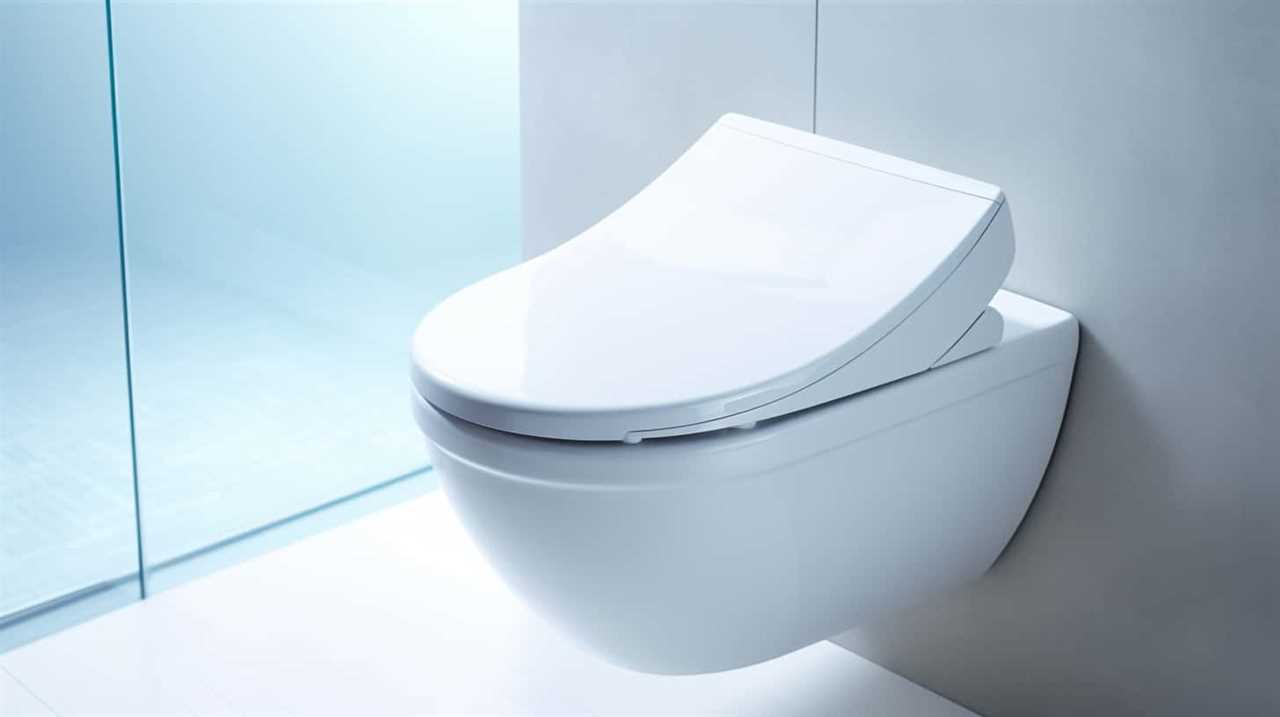
Secondly, flushing pads can lead to clogging and blockages in sewage systems, causing expensive repairs and disruptions in service.
Lastly, it’s important to educate individuals on proper disposal methods to prevent these issues and promote responsible waste management.
Environmental Impact of Flushing
Flushing sanitary pads has a detrimental environmental impact on sewage treatment systems. When sanitary pads are flushed down the toilet, they end up in the sewage system, causing a range of environmental consequences and ecological damage.
Wastewater treatment plants aren’t designed to handle sanitary pads, leading to clogging and blockages in the system. This results in increased maintenance costs and potential sewage overflow, which can contaminate nearby water bodies.
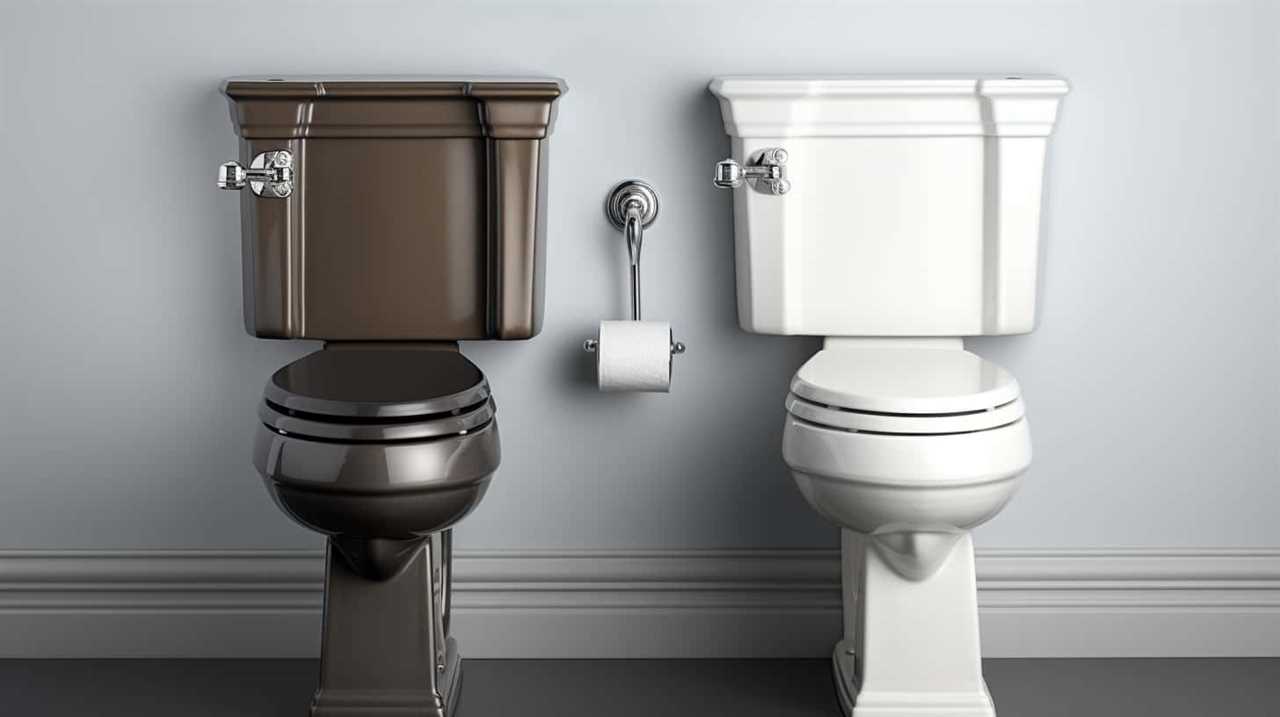
Sanitary pads aren’t biodegradable and can take years to decompose. This leads to the accumulation of non-biodegradable waste in landfills and marine environments, posing a threat to wildlife and ecosystems.
The chemicals and materials used in the production of sanitary pads can leach into the environment, polluting water sources and harming aquatic life.
To protect our sewage treatment systems and minimize the environmental impact, it’s essential to dispose of sanitary pads in the appropriate manner, such as wrapping them in a plastic bag and placing them in the trash.
Clogging Sewage Systems
As we continue our discussion on the environmental impact of flushing sanitary pads, let’s now delve into the issue of clogging sewage systems and the associated sewage treatment issues.
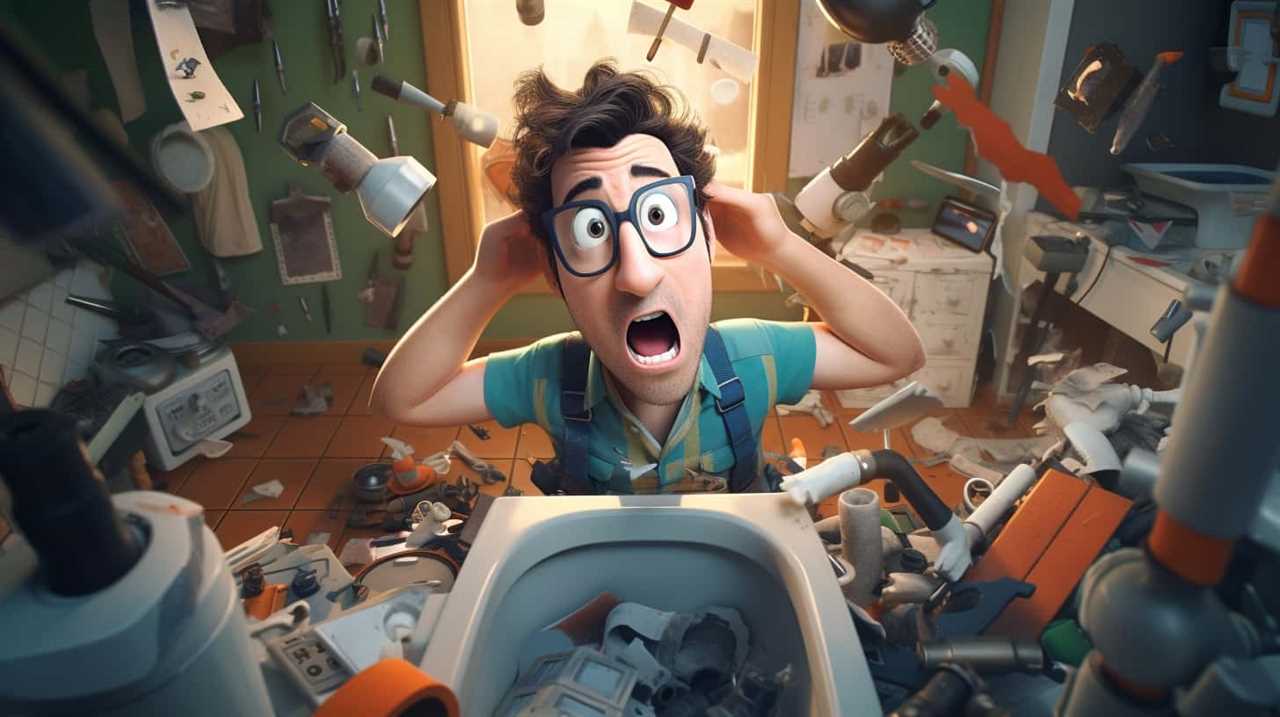
Flushing sanitary pads can lead to clogging in sewage systems, causing significant problems in the treatment process. Sanitary pads aren’t designed to disintegrate quickly in water, unlike toilet paper, which is specifically engineered for this purpose.
When flushed, sanitary pads can accumulate in the pipes and cause blockages, leading to reduced flow and potential backups in the sewage system. These clogs require manual intervention and can be time-consuming and costly to resolve.
Moreover, clogged sewage systems can increase the risk of public health hazards, such as wastewater overflow and contamination.
To prevent clogging and ensure proper sewage treatment, it’s crucial to dispose of sanitary pads in the appropriate waste bins instead of flushing them down the toilet.
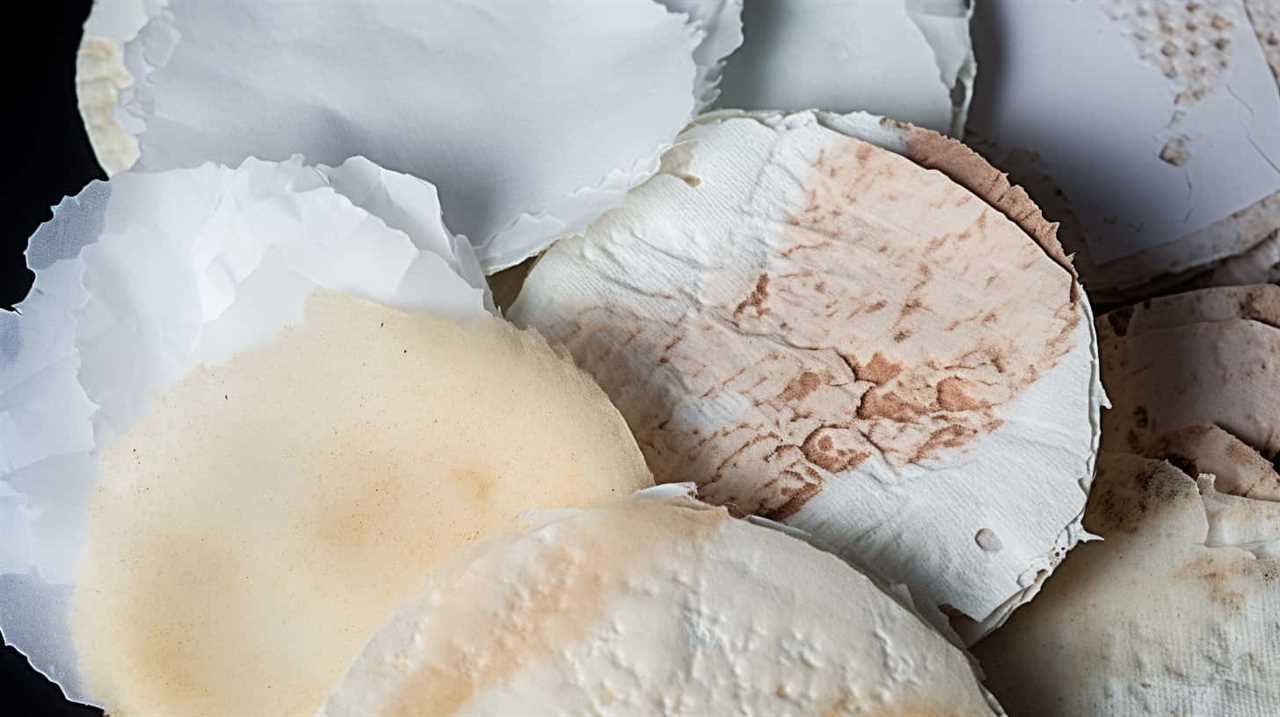
Proper Disposal Methods
To properly address the sewage treatment issues associated with flushing sanitary pads, we frequently encounter the need for implementing proper disposal methods. Proper pad disposal is crucial for responsible waste management and to prevent clogging of sewage systems. Here are some key points to consider:
- Wrap it up: After using a sanitary pad, wrap it in a plastic bag or newspaper to minimize odor and prevent leakage.
- Dispose in a bin: Place the wrapped pad in a designated bin, preferably with a lid, to ensure proper containment and prevent environmental contamination.
- Do not flush: Flushing sanitary pads can lead to blockages in the sewage system, resulting in costly repairs and potential harm to the environment.
By following these proper disposal methods, we can contribute to a healthier sewage system and promote responsible waste management.
However, it’s not just the improper disposal of sanitary pads that poses a risk. The chemicals and toxins present in these products also have significant implications, which we’ll explore in the next section.
Chemicals and Toxins
Our research has found that flushing sanitary pads releases a significant amount of chemicals and toxins into the water supply. This can result in chemical exposure and pose serious health risks.

Sanitary pads are made of various materials, including plastics, synthetic fibers, and absorbent gels. When these pads are flushed, they break down and release harmful substances such as phthalates, dioxins, and chlorine into the water.
Phthalates are known endocrine disruptors, while dioxins and chlorine are carcinogenic and can cause reproductive issues. These chemicals can contaminate water sources, affecting both human health and the environment.
It’s crucial to prevent the flushing of sanitary pads to avoid the release of these harmful chemicals and protect our water supply from contamination.
Unsuitable Material Composition
With regards to the unsuitable material composition of sanitary pads, we’ve discovered several key factors that make them unfit for flushing. These factors include:

- Non-biodegradable materials: Sanitary pads are primarily made of materials that don’t break down easily in water, such as plastic and synthetic fibers. This leads to the accumulation of unsanitary waste in the sewage system.
- Chemical additives: Many sanitary pads contain chemicals, such as dyes and fragrances, which can be harmful to the environment when released into water sources. Flushing these pads exacerbates the problem of environmental pollution.
- Absorbent properties: Sanitary pads are designed to absorb and retain large amounts of liquid. When flushed, they can cause blockages in the pipes, leading to plumbing issues and costly repairs.
It is important to recognize the detrimental impact of flushing sanitary pads on the environment and our infrastructure. As such, it’s crucial to explore alternatives for disposal that are both hygienic and eco-friendly.
Alternatives for Disposal
Now let’s explore the alternatives for disposing of sanitary pads in a more hygienic and environmentally friendly manner.
When it comes to disposal options for sanitary pads, there are a few eco-friendly alternatives to consider.
One option is to wrap the used pad in a biodegradable bag or newspaper before throwing it in the regular trash. This helps contain the odors and prevents the pad from coming into direct contact with other waste.

Another eco-friendly alternative is to use disposable sanitary pad bags made from plant-based materials that are biodegradable and compostable. These bags can be easily sealed and disposed of in a compost bin or with organic waste.
Additionally, for those looking for a more sustainable option, reusable cloth pads or menstrual cups are great alternatives to disposable sanitary pads. These can be washed and reused, reducing waste and environmental impact.
Proper Pad Disposal Methods
When it comes to proper pad disposal methods, it’s important to consider the environmental impact of flushing. Flushing sanitary pads can result in clogged pipes and damage to plumbing systems, leading to costly repairs.
Instead, it’s recommended to use alternative methods such as wrapping pads in newspaper or using dedicated disposal bags before throwing them in the trash.
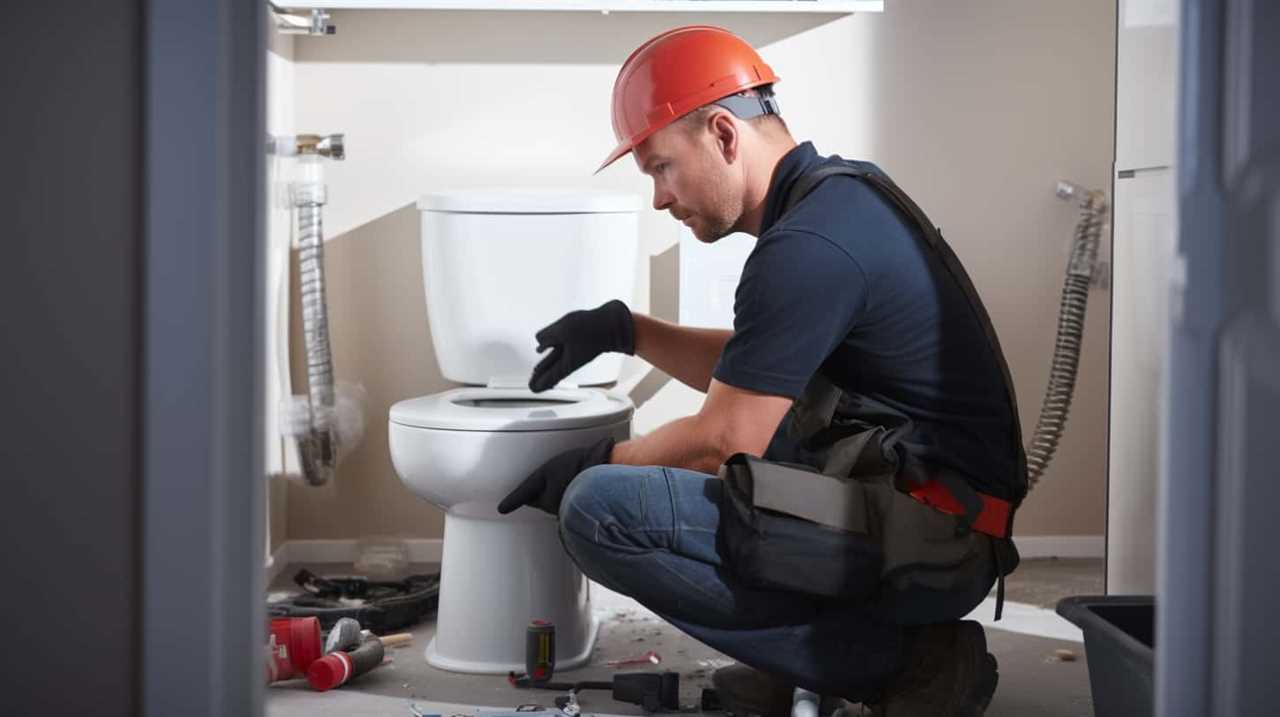
Environmental Impact of Flushing
To minimize the environmental impact, we should always use proper pad disposal methods, such as wrapping them in biodegradable bags before throwing them in the trash. Flushing sanitary pads can have serious environmental consequences and public health risks.
Here are three reasons why proper pad disposal is crucial:
- Plastic pads take hundreds of years to decompose, contributing to landfill waste and pollution.
- When flushed, pads can clog sewage systems, leading to costly repairs and potential contamination of water sources.
- Improper disposal of pads can attract pests and spread diseases, posing public health risks.
Plumbing System Damage
We should always dispose of sanitary pads properly to avoid damaging our plumbing system. Flushing them down the toilet may seem convenient, but it can lead to serious consequences. The materials used in sanitary pads, such as plastic and absorbent fibers, do not break down easily in water. As a result, they can get stuck in the pipes, causing clogs and blockages. Over time, these blockages can lead to costly repairs and even complete system failures. Moreover, improper disposal of sanitary pads can also pose public health concerns. To illustrate the importance of proper pad disposal, let’s take a look at the table below:
| Improper Pad Disposal Methods | Consequences |
|---|---|
| Flushing down the toilet | Pipe clogs, plumbing system damage |
| Throwing in the trash bin | Environmental pollution, health risks |
| Burying in the ground | Contamination of soil and water sources |
Alternatives for Disposal
To properly dispose of sanitary pads, one option is by using a special disposal bag. These bags are designed to seal in the used pad securely, preventing any leakage or odor.
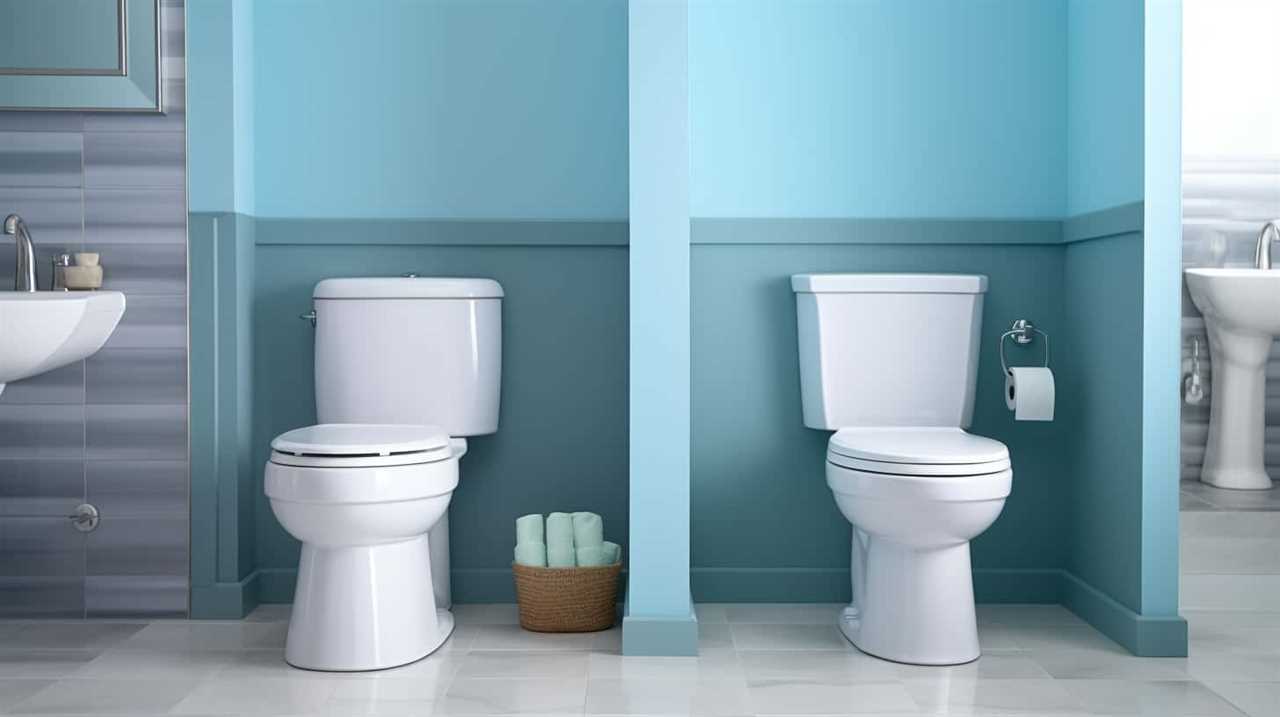
Here are three eco-friendly solutions for proper pad disposal:
- Biodegradable Bags: These bags are made from materials that break down naturally over time, reducing their impact on the environment.
- Sanitary Pad Disposal Bins: These bins are specifically designed for the disposal of sanitary pads. They’re equipped with a secure lid to prevent any unpleasant odors from escaping.
- Incineration: Some companies offer incinerators specifically designed for sanitary pad disposal. These incinerators burn the pads at high temperatures, reducing them to ash.
Proper disposal of sanitary pads is essential to maintain hygiene and protect the environment. By choosing eco-friendly disposal options, we can contribute to a greener and cleaner future. However, it’s equally important to educate ourselves and raise awareness about the importance of proper pad disposal methods.
Importance of Education and Awareness
Our society’s lack of education and awareness about the proper disposal of sanitary pads is a significant problem. Without understanding the importance of education and responsible hygiene practices, many individuals continue to flush sanitary pads down the toilet, leading to clogged pipes, sewage backups, and environmental pollution. It is crucial to educate the public about the proper disposal methods to prevent these issues and promote sustainable waste management practices.
To emphasize the need for education and awareness, consider the following table:
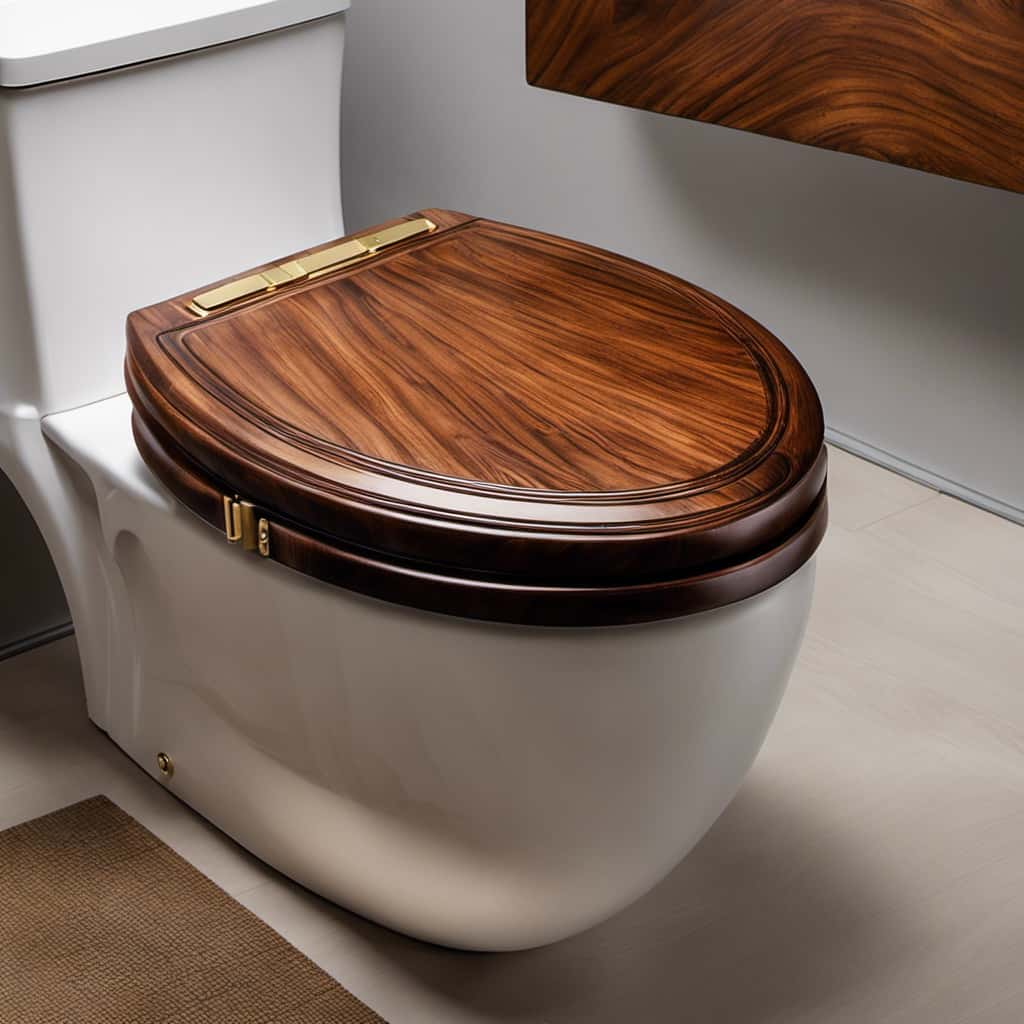
| Problem | Consequence | Solution |
|---|---|---|
| Clogged pipes | Expensive repairs and inconvenience | Educate on proper disposal methods and provide alternatives |
| Sewage backups | Health hazards and environmental pollution | Promote responsible waste management practices |
| Environmental pollution | Harm to aquatic life and ecosystem degradation | Raise awareness about the impact of improper disposal |
Impact on Public Infrastructure
The improper flushing of sanitary pads can have detrimental effects on public infrastructure, specifically in the form of clogged pipes and sewage system malfunctions. This not only impacts public health but also leads to significant economic consequences.
Here are a few reasons why flushing sanitary pads can have such a negative impact:
- Clogged pipes: Sanitary pads aren’t designed to break down like toilet paper, so when flushed, they can accumulate and block pipes, causing backups and overflows.
- Sewage system malfunctions: Flushed pads can get stuck in the sewage system, leading to blockages and reduced system efficiency, which can result in the release of untreated wastewater into the environment.
- Increased maintenance costs: Dealing with clogged pipes and sewage system repairs requires significant time, effort, and resources, all of which contribute to increased maintenance costs and higher expenses for municipalities.
The impact of improper flushing on public infrastructure is substantial and can result in costly repairs and maintenance.
Costly Repairs and Maintenance
We have to deal with the costly repairs and maintenance caused by flushing sanitary pads.

When sanitary pads are flushed down the toilet, they can cause blockages in the sewage system, leading to expensive repairs. The pads can get tangled with other debris, such as wet wipes and hair, creating clogs in the pipes. These clogs require professional intervention to remove, resulting in costly repairs for the sewage infrastructure.
Additionally, the presence of sanitary pads in the sewage system can lead to sewage treatment issues. The pads can clog filters and pumps at sewage treatment plants, reducing their efficiency and increasing maintenance costs.
Therefore, it’s crucial to properly dispose of sanitary pads in designated disposal bins, rather than flushing them down the toilet, to avoid these costly repairs and maintain the functionality of our sewage infrastructure.
Responsible Hygiene Practices
To maintain a functional sewage system and prevent costly repairs, it’s important that we consistently practice responsible hygiene by properly disposing of sanitary pads in designated bins rather than flushing them down the toilet. Responsible disposal of sanitary pads not only helps to protect the environment but also ensures the smooth operation of our sewage systems.

Here are some eco-friendly options for responsible disposal:
- Wrap the used sanitary pad in a biodegradable bag before discarding it in a designated bin.
- Consider using reusable cloth pads or menstrual cups, which aren’t only more sustainable but also cost-effective in the long run.
- Educate others about the importance of responsible disposal and encourage them to adopt eco-friendly options.
Frequently Asked Questions
Are There Any Health Risks Associated With Flushing Sanitary Pads?
There are indeed health risks associated with flushing sanitary pads. It can lead to clogged pipes, sewage backups, and potential exposure to harmful bacteria. Additionally, the environmental impact of flushing pads is significant, as they can cause damage to wastewater treatment systems.
Can Flushing Sanitary Pads Lead to Sewer Backups?
Flushing sanitary pads can cause sewer backups and plumbing issues. It’s important to remember that our sewer system is not designed to handle these items. Proper disposal is crucial to avoid costly repairs.
Are There Any Eco-Friendly Alternatives to Flushing Sanitary Pads?
There are eco-friendly alternatives to flushing sanitary pads, such as reusable pads. These pads offer numerous benefits, including reduced waste and environmental impact. They are a sustainable option for those seeking a more environmentally conscious menstrual product.
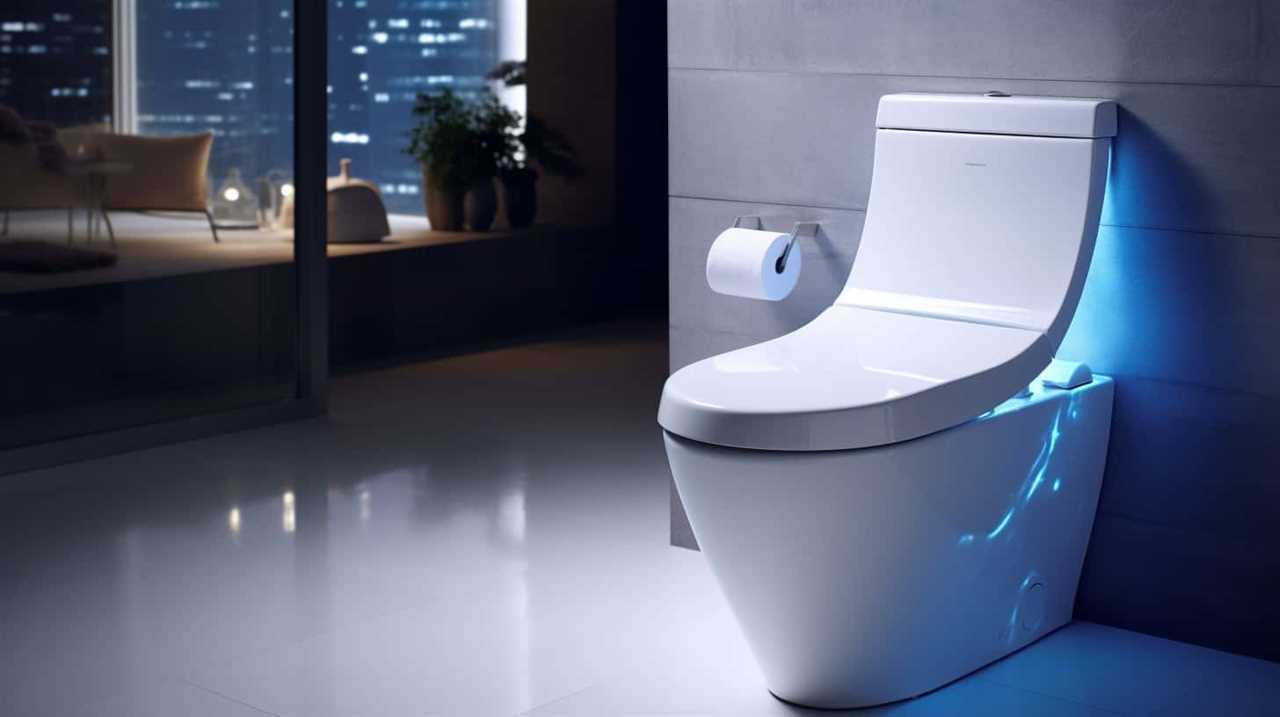
What Are the Consequences of Flushing Non-Biodegradable Materials Down the Toilet?
Flushing non-biodegradable materials down the toilet can have severe consequences. Improper disposal can lead to clogged pipes, sewage backups, and damage to wastewater treatment systems. The environmental impact is significant, as these materials can end up in waterways, harming ecosystems.
How Can Improper Disposal of Sanitary Pads Impact Water Quality?
Improper disposal of sanitary pads can have a significant impact on water quality. When flushed, these non-biodegradable materials can lead to water pollution, causing harm to the environment and aquatic life.
Conclusion
In conclusion, it’s crucial to understand the detrimental effects of flushing sanitary pads. By picturing a tangled mess of pipes and clogged sewage systems, we can grasp the environmental damage, plumbing system disruptions, and costly repairs caused by this irresponsible act.
It’s imperative that we educate ourselves and others about proper disposal methods to preserve public infrastructure and protect our environment. Let’s practice responsible hygiene and ensure a cleaner, healthier future for all.
